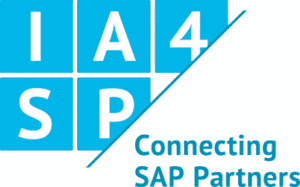What are KeyValueStore / JSONStore Plugin?
The KeyValue Store Plugin is an easy way to save a certain structure of data with a unique identifier = key and value
For Example
| Key | Value |
| Name | Christian |
Important Update regarding Persistence Layer
Up to Simplifier 7.0, the plugins JSONStore and KeyValueStore are using MapDB as storage Backend by default. MapDB writes all entries into one large file.
Beginning with 6.5.151 and 7.0.44, a config setting was introduced wich gave the possibility to use the default Simplifier Database as backend for these to plugins.
With Simplifier 7 EHP 1, this setting is removed and the default database is the only supported backend for JSONStore and KeyValueStore Plugins.
Backup your database files
Before starting the migration, make sure you have a backup of the two database files. The files to backup are:
${SIMPLIFIER_DATA_DIR}/plugins/jsonStore/jsonStore
${SIMPLIFIER_DATA_DIR}/plugins/keyValueStore/kvstore
In a default setup using our docker compose file, ${SIMPLIFIER_DATA_DIR} is /var/lib/simplifier/data.
Scenario 1: Default Setup
Follow either scenario 1 or scenario, never both.
This is the standard setup which most people should follow.
Before you do the Simplifier update: Create Databases
Create two new database in your default Database server (the one currently used for your simplifier database).
If you use the recommended docker compose setup including the MySQL Database Server container image:
Connect to the host via SSH
You need the following informtion from your .env file:
Connect to your MySQL server
docker exec -it mysql /bin/sh mysql -u root -p
Inside the MySQL console, run the following commands. Substitude ${DB_NAME} with the value of DB_NAME from .env file.
CREATE DATABASE ${DB_NAME}_keyvalue;
GRANT ALL PRIVILEGES ON `${DB_NAME}_keyvalue`.* TO `simplifier`@`%`;
CREATE DATABASE ${DB_NAME}_jsonstore;
GRANT ALL PRIVILEGES ON `${DB_NAME}_jsonstore`.* TO `simplifier`@`%`;
FLUSH PRIVILEGES;
Scenario 2: Individual Setup
Follow either scenario 1 or scenario, never both.
This scenario is relevant if you want to control the setup in more details.
Before you do the Simplifier update: Create Databases
Create two new databases, one for the Key-Value Store and one for the JSON Store. If necessary, create a user or grant an existing user all access rights to these 2 new databases.
For example, if you already have an DB user called sf_db_user and if you are using a MySQL database server:
CREATE DATABASE simplifier_keyvalue; GRANT ALL PRIVILEGES ON `simplifier_keyvalue`.* TO `sf_db_user`@`%`; CREATE DATABASE simplifier_jsonstore; GRANT ALL PRIVILEGES ON `simplifier_jsonstore`.* TO `sf_db_user`@`%`; FLUSH PRIVILEGES;
Create Configuration
Go to the Simplifier data directory. Then
cd conf
In this directory, you need to create two new files, one for Key-Value Store and one for JSON Store plugin. Use your favourite editor, e.g. nano. These files have to be named exactly like this.
nano jsonStore_include.conf nano keyValueStorePlugin_include.conf
In this file, write the folling content if you have a MySQL server. Substitute appropriate values for user, password, database host and database name. The content for both plugins is similar, just write the appropriate database name.
database {
dbms: "mysql"
user: "YourDatabaseUserName"
pass: "YourDatabasePassword"
host: "HostnameOfYourDatabaseServer"
port: 3306
database: "NameOfTheDatabaseCreatedBefore"
table_prefix: ""
}
If you have an Oracle Database server:
database {
dbms: "oracle"
user: "YourDatabaseUserName"
pass: "YourDatabasePassword"
host: "HostnameOfYourDatabaseServer"
port: 1527
database: "NameOfTheDatabaseCreatedBefore"
table_prefix: ""
}
Migration Process
The migration process startet automatically if you run the new simplifier version and the settings were preconfigured.











